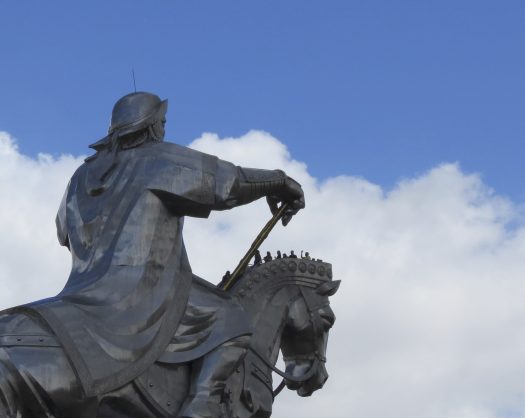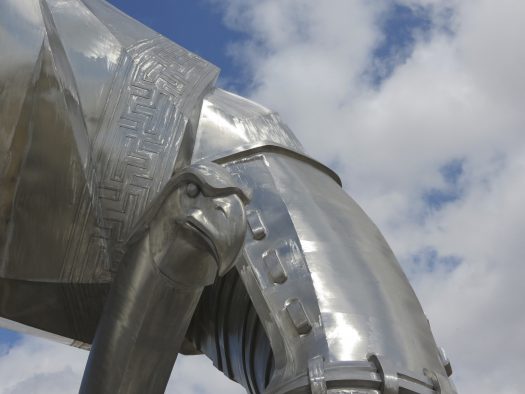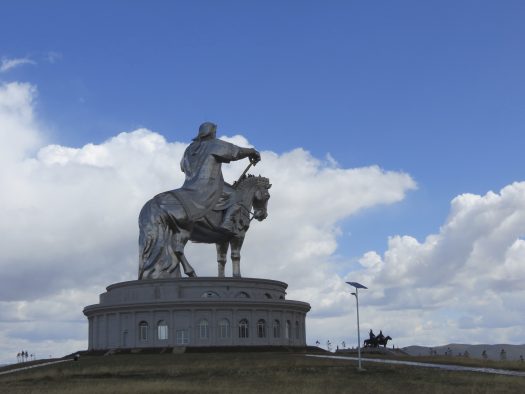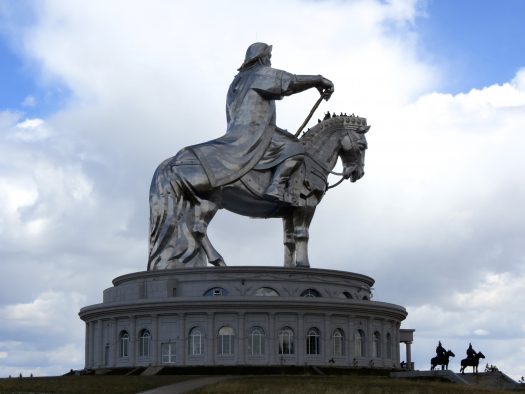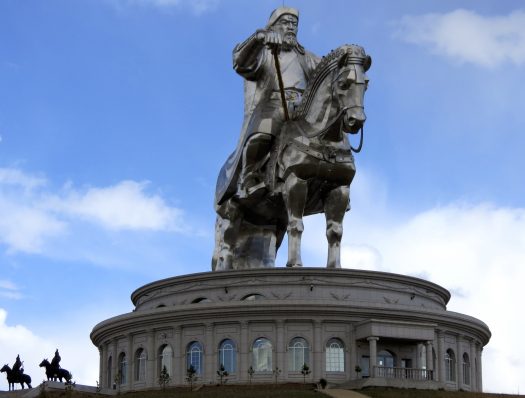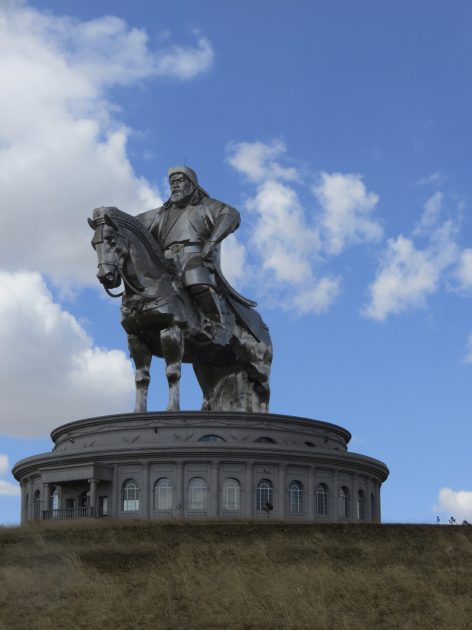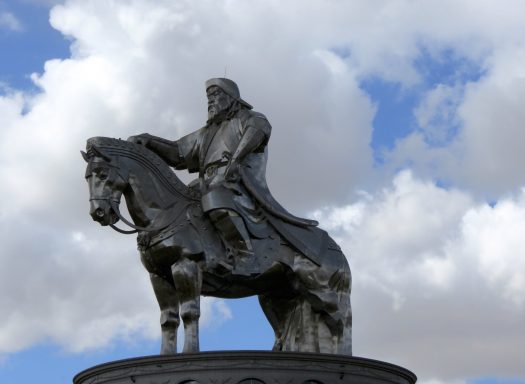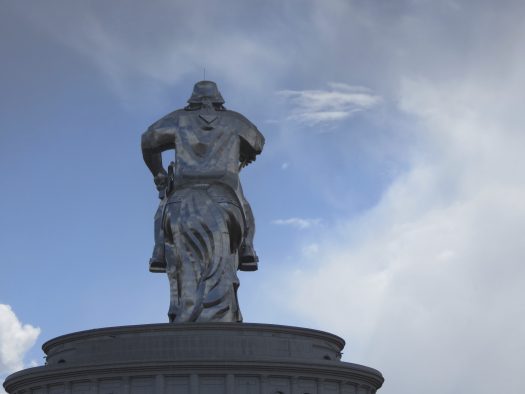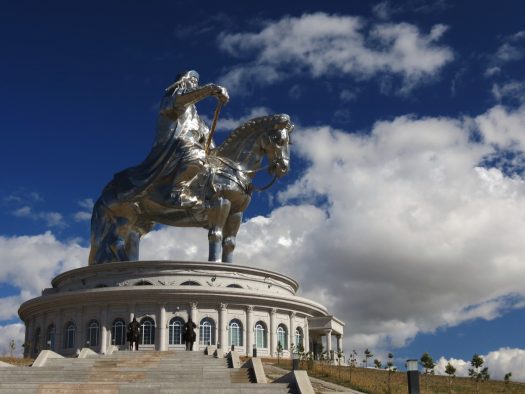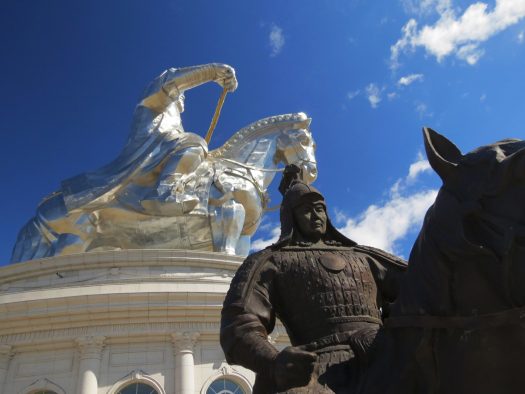To emphasize that Genghis Khan was Mongolian, the Mongolians erected several equestrian statues of him, one of them the world’s largest. This statue has been built in Tsonjin Boldog, on the bank of the Tuul River, some 50 kilometres from the capital of Ulan Bator. It is right on the spot where, according to legend, Genghis Khan found a golden whip.
The statue, made from stainless steel, is 30 metres tall and stands on top of a 10 metre high visitor centre. In this centre, one can enjoy not only a giant boot, a ‘golden’ whip and a restaurant, but also a museum, with an attractively displayed collection of old Mongolian artefacts, making clear that these nomadic tribes had a well-developed culture.
It is quite a sensation to go up by elevator through the hind legs of the statue, walk to the head of the horse through its chest and stand on the horse’s neck, with good views of the steppes around the statue.
Also worthy of mention is the entrance gate to the Genghis Khan Statue Complex, with on top his nine generals, from left to right: Chuumergen from the Jurchid tribe, Khar Khiruge, Sorqan Shira, Shikhikhutug, Jelme, Borokhula, Bo’orchu from the Aruled tribe, Jebe from the Uriankhai tribe and Mukhulai from the Jalair tribe.
The Genco Tour Bureau in Ulan Bator took the initiative to establish the Genghis Khan Statue Complex. This organization intends to create an army of 10,000 warriors, all different life-size equestrian sculptures. The method of financing of this army is unique. For 20 million Tugrik (some 10,700 US dollars) one can sponsor a steel warrior, or for 30 million Tugrik (16,000 US dollars) a bronze one, in return for which the warrior will have the face of the sponsor! In Ulan Bator I saw that there is already an equestrian sculpture of a warrior with the face of a Mongolian Olympic medal winner and one with the face of a well-known Mongolian actor.
